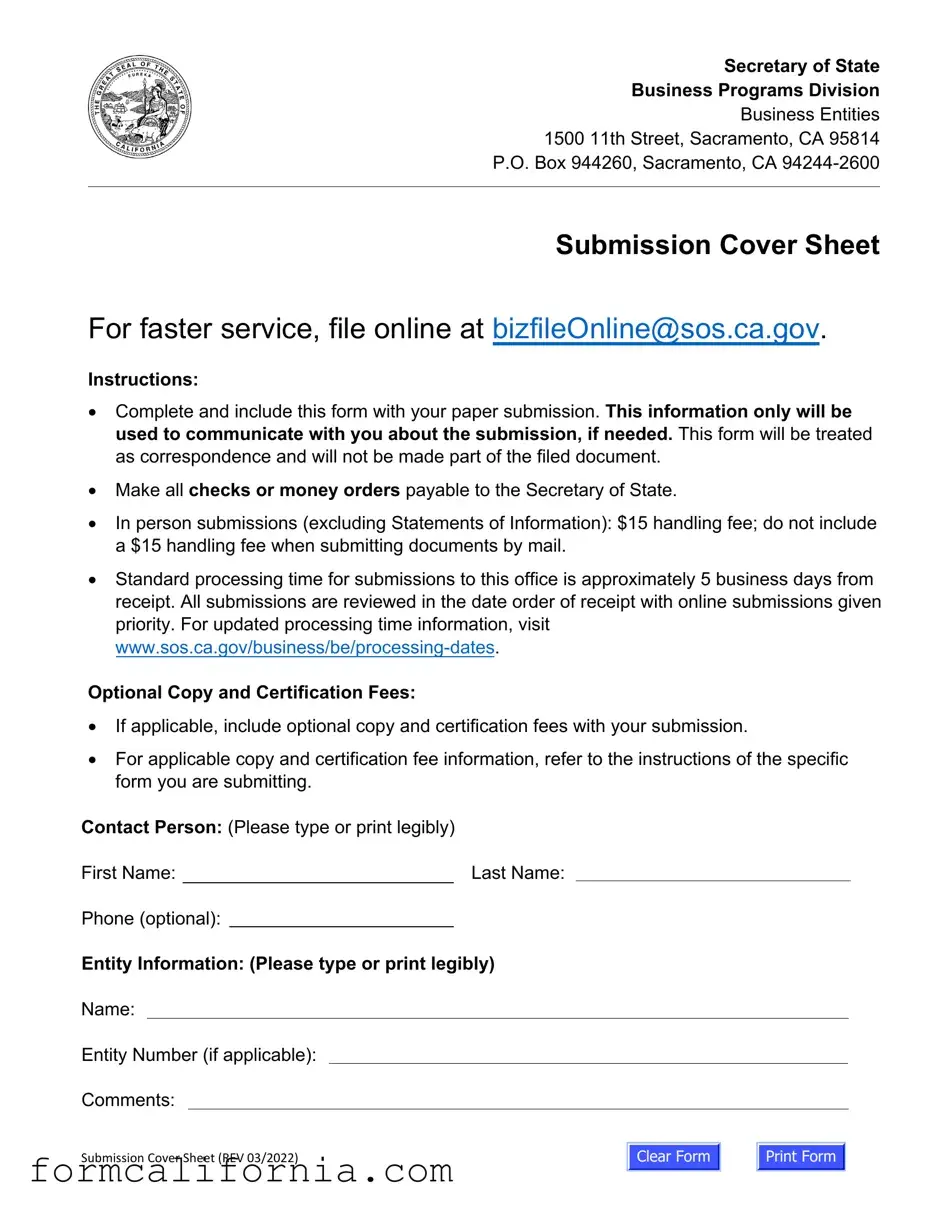The Articles of Incorporation for a Corporation are similar to the California LLC-1 form, as both are initial documents filed with the state to legally establish the entity. The Articles of Incorporation detail key information about a corporation, such as its name, purpose, type of stock, and information about its agent for service of process. Similarly, the LLC-1 form provides essential details about the limited liability company, including its name, management structure, and the agent for service of process. Each form serves as a public record that officially recognizes the formation of either a corporation or an LLC in California.
DBA (Doing Business As) Filing forms are also akin to the California LLC-1 form in that they both involve the formal process of registering a business entity under a specific name. While the LLC-1 form establishes a new limited liability company under a chosen name, a DBA filing allows a business to operate under a name different from its legal name. Both documents are crucial for business identity and branding, ensuring that businesses comply with state regulations on business names.
The Statement of Information filing required periodically by the California Secretary of State shares similarities with the LLC-1 form. This statement updates or confirms the information about the business, such as addresses, management, and the agent for service of process. Though the LLC-1 is filed at the inception of the company and the Statement of Information is filed annually or biennially, both are vital for maintaining accurate public records about the business.
Foreign Qualification Applications are similar to the LLC-1 form when a business formed in another state wants to operate in California. While the LLC-1 form is for domestic companies initiating their business within the state, a Foreign Qualification Application is the process by which an out-of-state company registers to do business in California. Both filings provide essential information to the state about the company, including its name, principal business address, and agent for service of process.
The Seller's Permit Application filed with the California Department of Tax and Fee Administration parallels the LLC-1 form in the context of regulatory compliance for starting a business. While the LLC-1 form deals with the legal formation of the company, a Seller's Permit Application allows a business to sell or lease tangible personal property that would ordinarily be subject to sales tax. Together, they represent foundational steps in establishing a business's operational and legal footing within the state.
Business License Applications at the local city or county level share common ground with the California LLC-1 form, as they both are prerequisites for legally operating a business. An LLC-1 form creates the legal entity at the state level, whereas business licenses pertain to compliance with local regulations and ordinances. Every business must consider both state and local requirements to ensure full legal operation.
The Employer Identification Number (EIN) Application with the IRS bears resemblance to the LLC-1 form in establishing a business's identity, but at the federal level. The LLC-1 registers the business within California, and obtaining an EIN provides a unique identifier for tax purposes at the national level. This number is essential for hiring employees, opening business bank accounts, and filing taxes.
Trademark Registration Applications, while primarily concerned with the protection of a business name or logo at the state or federal level, share a conceptual link with the LLC-1 form. Filing an LLC-1 secures the company's name within the state of California, while registering a trademark safeguards branding elements against infringement. Both processes are integral to establishing a business's unique identity and legal protection.
Franchise Tax Board Registrations are necessary for tax compliance and are complementary to the LLC-1 form which establishes the business entity. After filing the LLC-1, businesses must register with the California Franchise Tax Board to address their state tax obligations. This registration is crucial for managing the financial aspects of running a business, including the payment of the annual minimum franchise tax mentioned in the LLC-1 form.
The California Uniform Commercial Code (UCC) Financing Statement is akin to the LLC-1 in that it relates to the legal stature and financial dealings of a business. While the LLC-1 form outlines the formation and basic structure of the company, a UCC Financing Statement is filed to notify the public of a secured interest in personal property, a critical step for businesses obtaining financing or credit. Both documents are essential parts of the legal and financial infrastructure supporting business operations.


